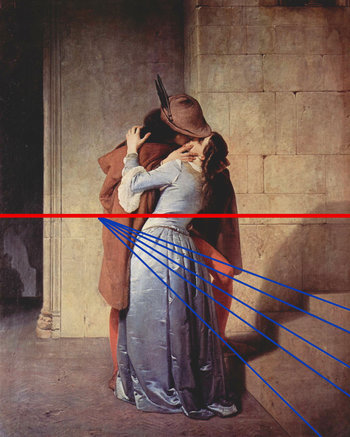
Sash Window
A window with two or more panels known as sashes where at least one of the panels can be slid up and down to open the window. The sash window emerged in the late 17th century in England and has been extremely common ever since. Sash windows can be considered the default, standard or "normal" type of window in many regions of the world. In the United States, a sash window is commonly known as a single-hung or double-hung window depending on whether both panels move. Modern double-hung windows move up and down but may also be be tilted in at an angle to allow the exterior glass to be cleaned from the inside. This also allows the window to be fully opened to maximize airflow.
Paned Window
A window constructed of relatively small panes of glass in a frame. Historically, this was done due to technical limitations whereby large windows required a frame for strength. Modern windows may be paned simply to achieve a classic aesthetic. Panes are also commonly used for custom windows because they are easy to work with and less expensive than large one piece custom windows in odd shapes and dimensions.
Sliding Window
A sliding window, also known as a horizontal sliding sash window, has two or more windows on different tracks that slide horizontally to open and close the window.
Arched Window
An arched shaped window is typically perceived as a neoclassical or a gothic-revival style. In antiquity, arches had a structural purpose as their shape is useful for supporting weight when working with extremely heavy materials such as stone. This became a stylistic element of later architecture long after this had any structural relevance.
Palladian Window
A window with three sections with an arch in the middle that is usually far larger than the other two sections. This is associated with Neoclassical architecture and the revival of styles originally introduced by the Renaissance architect Andrea Palladio. These were popular in England and North America in the 19th century and are still sold today.
Transom
A small window above a door that is used as a decorative element of an entryway. Transoms also serve to provide natural light in the common case that a door is completely opaque.
Side Light
Windows on either side of a door or main window. These often don't open and are used for decoration and light.
Picture Window
Large windows with no visible features such as glazing that can't be opened. The idea here is that the window gets out of the way such that you can view the outside as if it is a framed picture.
Deadlite
A deadlite, also known as a fixed window, is a small window that doesn't open. In many cases, these are custom windows that are used as decorative elements of an exterior and interior.
Awning Window
An awning window opens outwards from hinges on the top to act as an awning that protects the window opening from rain.
Hopper Window
A window that opens from hinges on the bottom inward. This is used for small windows with thin window frames where there is a requirement to have some airflow into a space. As such, hopper windows are often found in basements and attics.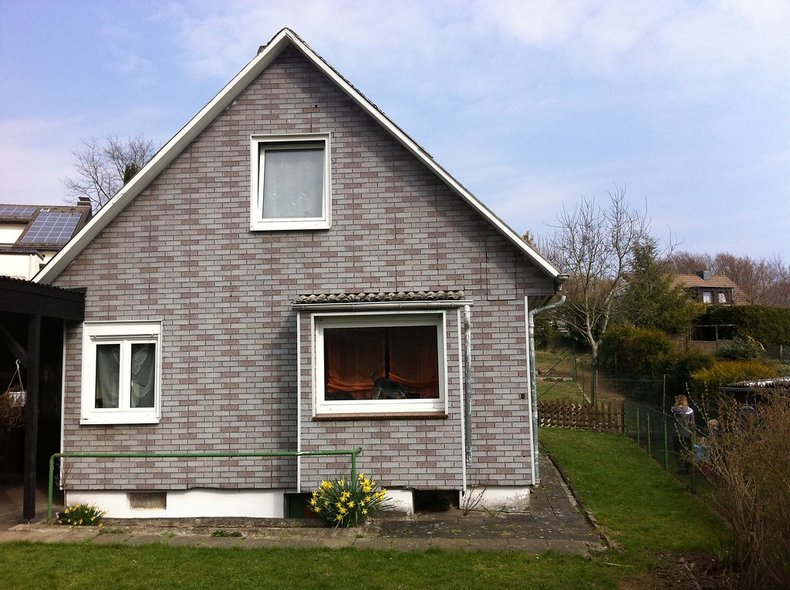
Pivot Window
A pilot window revolves either horizontally or vertically around its middle such that it can be reversed. This were historically common in factories and budget apartment buildings. However, there are examples of architects using pivot windows in appealing ways. For example, a pivot window can be designed to look like a large picture window. This provides novelty when the window can be opened and completely reversed. Any time that you are surprising people, safety is a consideration as people commonly perceive large windows with no sashes to be unopenable and may lean against them not knowing they swing open.
Egress Window
An egress window is designed to provide a route of escape in an emergency. These are commonly found in basements.
Dormer Window
A dormer is a structure that sticks out vertically from a pitched roof. These often contain a window. A dormer window is a common type of renovation that slightly increases space and dramatically improves light and ventilation in an attic or top floor.
Casement Window
Windows, usually in pairs, that are mounted on hinges such that they swing in or out or both.
Jalousie Window
A jalousie window, or louvered window, is a series of rectangular cuts of glass or wood set in a frame such that they are parallel with each other. These can be tilted up and down to control airflow using a crank. These are commonly used in a warm climate to allow windows to be open in reasonably heavy rain. Jalousie windows are unusual examples of windows that can be constructed completely of wood.
Shoji
Shoji are traditional Japanese windows, doors and walls constructed with translucent paper in a wooden frame. Where these are exterior windows they are protected with a glass window or traditional wooden storm shutters known as amado that need to be closed at night for security and in bad weather. Shoji are high maintenance as they are easily broken and children in particular tend to break them. It is a tradition to replace the paper in all the Shoji in the house just before New Years each year.
Window Sill
A window sill is the surface at the bottom of a window frame. These can both be interior and exterior elements and are commonly used to hold plants.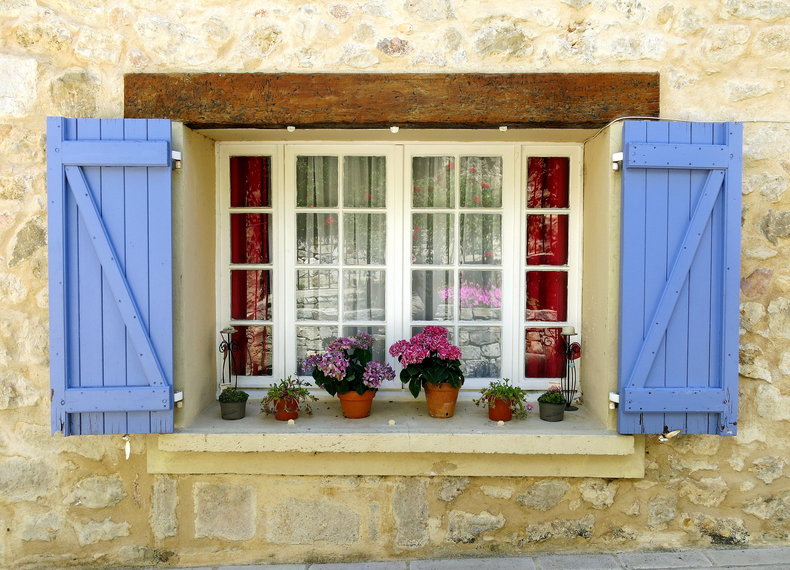
Bay Window
A window that protrudes from an exterior wall. This creates a large interior window still. This is usually a custom construction job that creates two angled windows and a larger middle window at the same angle as the wall.
Bow Window
A bow window protrudes like a bay window with the difference being that each window is at an angle with five sections being common.
Skylight
A window built into a roof for daylighting purposes. A roof almost always gets far more light than a wall. As such, most skylights are small relative to the size of the room to prevent glaring light levels and overheating of a room. A room in a permanently shaded location may use a larger skylight.
Sunlight Transport
Sunlight transport is an architectural technique that captures natural light and moves it into a building. This may include structures that are similar to windows or skylights that emit light natural deep inside a structure.
Window Shutter
A permanent device build into a window frame that allows for the control of light and airflow. These may also be used for security, privacy and to protect windows from storms. Window shutters that have horizontal slats that can be angled are known as a louver.
Unglazed Window
A window that has no glass such that it is simply an opening in a wall. These are historically common and are still common in some regions. An unglazed window is typically protected by window shutters.
Shaped Window
Rectangular windows are amazingly dominant on a global basis such that any window with a different shape tends to stand out. In some cases, shapes such as circles have religious or cultural significance. For example, the window of confusion and window of enlightenment at Genkoan temple in Kyoto. In Japanese Buddhism, a circle known as ensou symbolizes the void. This can be naively translated "enlightenment."
Storm Windows
Storm windows are windows that are sold with two layers such that one window sits in front of another in the same window frame with a space between. This is commonly used as a form of insulation in cold climates. Similar configurations of double windows can be used for sound insulation.
Double Pane
Windows can be manufactured to have two, three or four layers of panes to improve heat and sound insulation. This may be a more visually appealing option than storm windows. Although storm windows can also be double pane.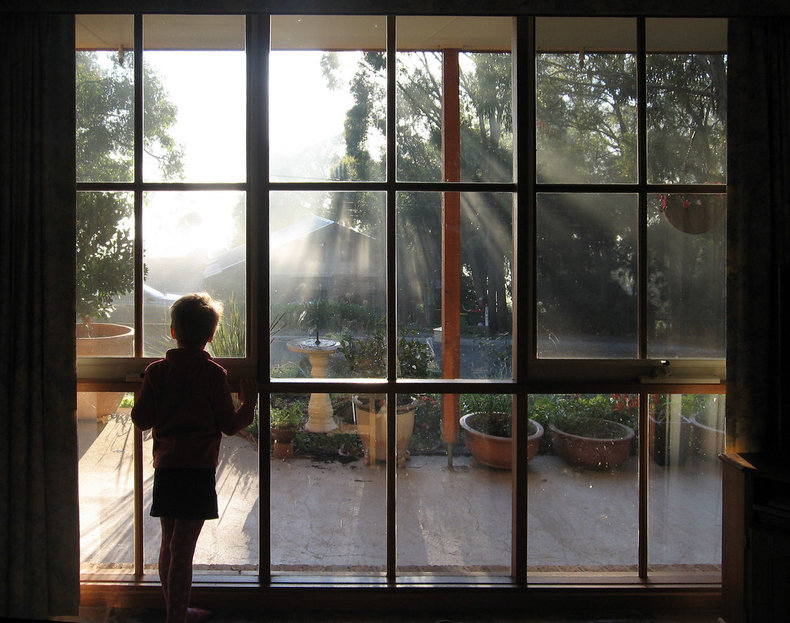
Glass Blocks
Glass blocks are often used to construct custom windows and walls that allow diffused natural light into interiors. These can be manufactured to be secure, strong and to provide thermal and acoustic insulation. It is also possible to buy standard windows that are made with glass blocks. Most glass block windows can't be opened for airflow.
Bottle Wall
Bottles can be used to construct interior or exterior walls and windows. This is often done in the spirit of reuse. However, the benefits of reusing materials should be balanced with lower strength, energy efficiency and other desirable features such as acoustic insulation as compared to architectural products such as glass blocks. In many cases, bottle walls are a novelty or are appreciated for their imperfect visual appearance.
Security Windows
Windows designed with security features such as impact resistant glass. Windows can be reinforced without any visible features. For example, tempered glass is stronger than regular glass. However, in many cases security windows are practical items with bleak aesthetics such as a visible mesh of wire or steel bars.
Smart Windows
Smart windows are windows that are controlled by information technology. A common use case is for windows to dim themselves in overly bright sunlight. Smart windows may also react to people such as an office window that becomes privacy glass when someone walks in the room. Beyond novelties like this, they can solve problems in areas such as passive cooling and heating by adapting to conditions. As a simple example, a window that lets air in when a room is too hot and cool air is available outside. Cutting edge architecture views heating and cooling as a design problem of the entire building as opposed to a centralized system that you install at the end of a project. This is done in the spirit of resilience.
Stained Glass
Windows that use colored glass. This is primarily associated with artworks found in a grand places such as churches or university libraries. Less dramatic versions do exist. It should be noted that stained glass produces colored light as opposed to the natural light that you get with a transparent window.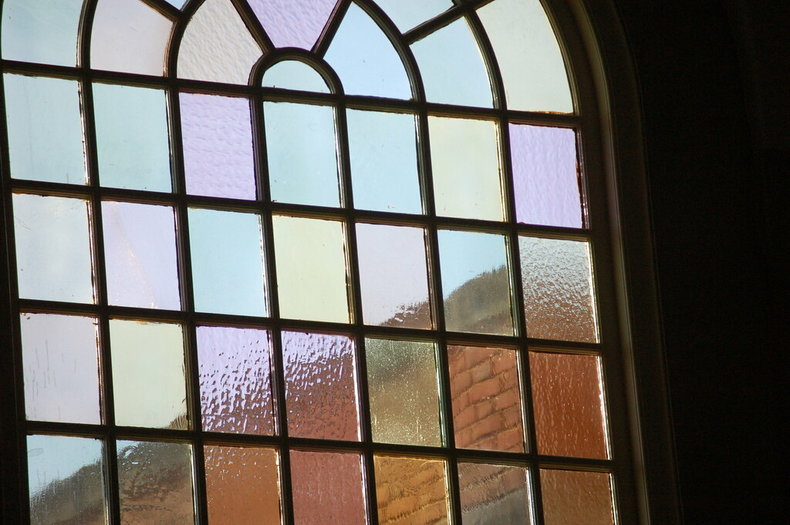
Architectural Glass
High quality safety glass that may be reinforced, toughened and laminated. This is primarily used in large commercial buildings but can also be used for custom residential projects. Architectural glass comes in many varieties and is often privacy glass.
Glass Wall
A glass wall, also known as a floor to ceiling window, is a wall that is completely constructed with a high strength safety glass. This is extremely common in commercial buildings and far less common for homes and other small residential structures. Glass walls can have large panes and can be constructed to have sections that can be opened.
| Overview: Windows | ||
Type | ||
Definition | An opening in a wall designed to allow light and air into an interior space. | |
Word Origin | Window originates from the Old Norse vindauga meaning "wind eye." The word window appears in English from the 13th century but originally meant an unglazed skylight, in other words an open space cut in a ceiling for air and light. | |
Related Concepts | ||





























